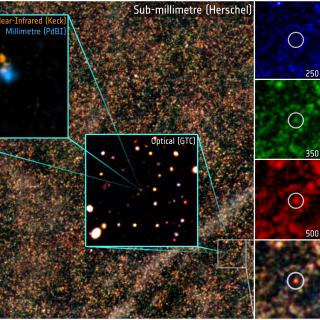Bibcode
Podlewska-Gaca, E.; Marciniak, A.; Alí-Lagoa, V.; Bartczak, P.; Müller, T. G.; Szakáts, R.; Duffard, R.; Molnár, L.; Pál, A.; Butkiewicz-Bąk, M.; Dudziński, G.; Dziadura, K.; Antonini, P.; Asenjo, V.; Audejean, M.; Benkhaldoun, Z.; Behrend, R.; Bernasconi, L.; Bosch, J. M.; Chapman, A.; Dintinjana, B.; Farkas, A.; Ferrais, M.; Geier, S.; Grice, J.; Hirsh, R.; Jacquinot, H.; Jehin, E.; Jones, A.; Molina, D.; Morales, N.; Parley, N.; Poncy, R.; Roy, R.; Santana-Ros, T.; Seli, B.; Sobkowiak, K.; Verebélyi, E.; Żukowski, K.
Referencia bibliográfica
Astronomy and Astrophysics
Fecha de publicación:
6
2020
Revista
Número de citas
11
Número de citas referidas
9
Descripción
Context. Thanks to the Gaia mission, it will be possible to determine the masses of approximately hundreds of large main belt asteroids with very good precision. We currently have diameter estimates for all of them that can be used to compute their volume and hence their density. However, some of those diameters are still based on simple thermal models, which can occasionally lead to volume uncertainties as high as 20-30%.
Aims: The aim of this paper is to determine the 3D shape models and compute the volumes for 13 main belt asteroids that were selected from those targets for which Gaia will provide the mass with an accuracy of better than 10%.
Methods: We used the genetic Shaping Asteroids with Genetic Evolution (SAGE) algorithm to fit disk-integrated, dense photometric lightcurves and obtain detailed asteroid shape models. These models were scaled by fitting them to available stellar occultation and/or thermal infrared observations.
Results: We determine the spin and shape models for 13 main belt asteroids using the SAGE algorithm. Occultation fitting enables us to confirm main shape features and the spin state, while thermophysical modeling leads to more precise diameters as well as estimates of thermal inertia values.
Conclusions: We calculated the volume of our sample of main-belt asteroids for which the Gaia satellite will provide precise mass determinations. From our volumes, it will then be possible to more accurately compute the bulk density, which is a fundamental physical property needed to understand the formation and evolution processes of small Solar System bodies.
Aims: The aim of this paper is to determine the 3D shape models and compute the volumes for 13 main belt asteroids that were selected from those targets for which Gaia will provide the mass with an accuracy of better than 10%.
Methods: We used the genetic Shaping Asteroids with Genetic Evolution (SAGE) algorithm to fit disk-integrated, dense photometric lightcurves and obtain detailed asteroid shape models. These models were scaled by fitting them to available stellar occultation and/or thermal infrared observations.
Results: We determine the spin and shape models for 13 main belt asteroids using the SAGE algorithm. Occultation fitting enables us to confirm main shape features and the spin state, while thermophysical modeling leads to more precise diameters as well as estimates of thermal inertia values.
Conclusions: We calculated the volume of our sample of main-belt asteroids for which the Gaia satellite will provide precise mass determinations. From our volumes, it will then be possible to more accurately compute the bulk density, which is a fundamental physical property needed to understand the formation and evolution processes of small Solar System bodies.
Proyectos relacionados

Formación y Evolución de Galaxias: Observaciones Infrarrojas y en otras Longitudes de Onda
Este grupo desarrolla varios proyectos extragalácticos en diferentes rangos del espectro electromagnético utilizando satélites y telescopios en tierra para estudiar la evolución cosmológica de las galaxias y el origen de la actividad nuclear en galaxias activas. En el aspecto instrumental, el grupo forma parte del consorcio internacional que ha
Ismael
Pérez Fournon